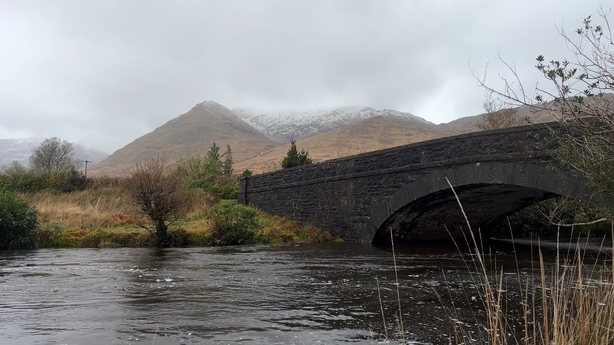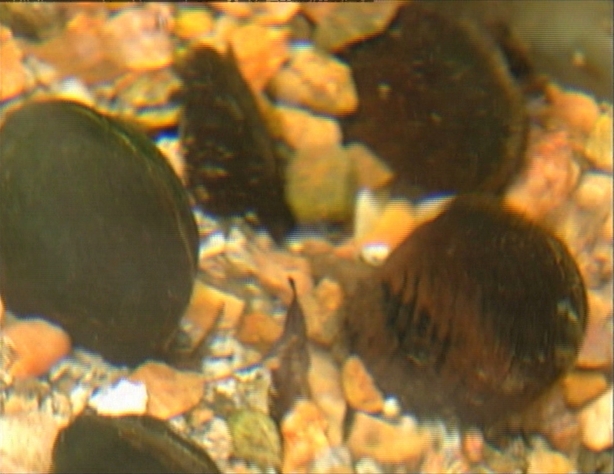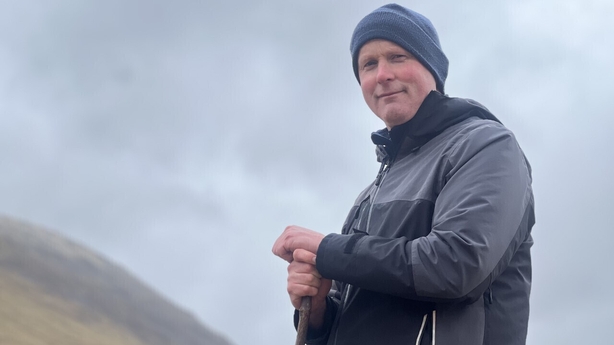An eighth-generation sheep farmer from Co Mayo says he's determined to do his bit to ensure the survival of Ireland's longest living animal - the freshwater pearl mussel.
Colm Gavin farms blackface ewes alongside the Bundorragha River in the Delphi Valley.
The river is one of the most important sites for the mussels, which are capable of surviving for up to 140 years.

The large filter-feeding bivalve is found in near-pristine freshwater habitats.
However, in the last century alone, 90% of the European population has been wiped out due to intensification of land use.
"The pearl mussel is very reliant on good water quality. It's like the Mariah Carey of the bivalve world," Colm says.
Colm is one of several farmers in the west who have been taking part in The Pearl Mussel Project.
The publicly-funded project rewards farmers to manage their land in ways that enhance water quality.
Colm said: "Basically, the water that comes on to this farm, we want it to be in as good a quality when it leaves the farm.
"700 metres would be the highest point of my land. It’s a sandstone mountain. Out to the west of us you got Mweelrea mountain, and past that you have the warm currents of the Atlantic coming in.
"So, we have the perfect conditions for rainfall. On average, it rains three metres a year. It’s an awful lot of rain. Dublin Airport gets a metre and a half - so double that.
"We want to slow down the sediment from the top of the mountain washing down into the river. We slowed down water flow and sediment going into the river by introducing silt traps and peat plugs.
"We put bridges in areas where there might be poaching or high traffic of animals. We also manage invasive species such as Molinia grass and rhododendron, which is a huge problem in the area".

Colm also hires a mobile sheep dipper which takes away any pollutants from his farm.
The Pearl Mussel Project, which is in its fifth and final year, is based in Co Kerry and Co Mayo.
Gerard Caden, the project's Northwest Catchment Officer, said: "The top eight catchment areas in Ireland account for 80% of Ireland’s pearl mussel population, so it’s really important for this project to work with and educate farmers in these areas."
"Initially, a farmer might not even know the pearl mussel lived in these rivers. We work with the farmers and payments are linked to the quality of the biodiversity on their farm, so it is a result-based project. We have seen the scores improve over the years.
"It’s one thing to maintain the mature population of pearl mussel, it’s another to encourage juvenile pearl mussel, due to their complex life cycle.
"In the Bundorragha river, we have seen recruitment of juvenile mussels, so it really is one of the most important pearl mussels sites in Ireland, if not Europe".

Colm Gavin is proud of the impact the project has had in the Bundorragha catchment.
"We have created a network with other farmers in the area due to The Pearl Mussel Project. It’s critical to do that, just to let people get to know each other and work together," he says.
"I want to keep farming relevant. I want to keep farming and I want to keep farming relevant.
"The mussels in this river have been here since the early 1900s, and the generation before that were there since before the famine. In just one of their generations, we have seen several. I don’t want to be the last one to see the pearl mussel thriving here."







